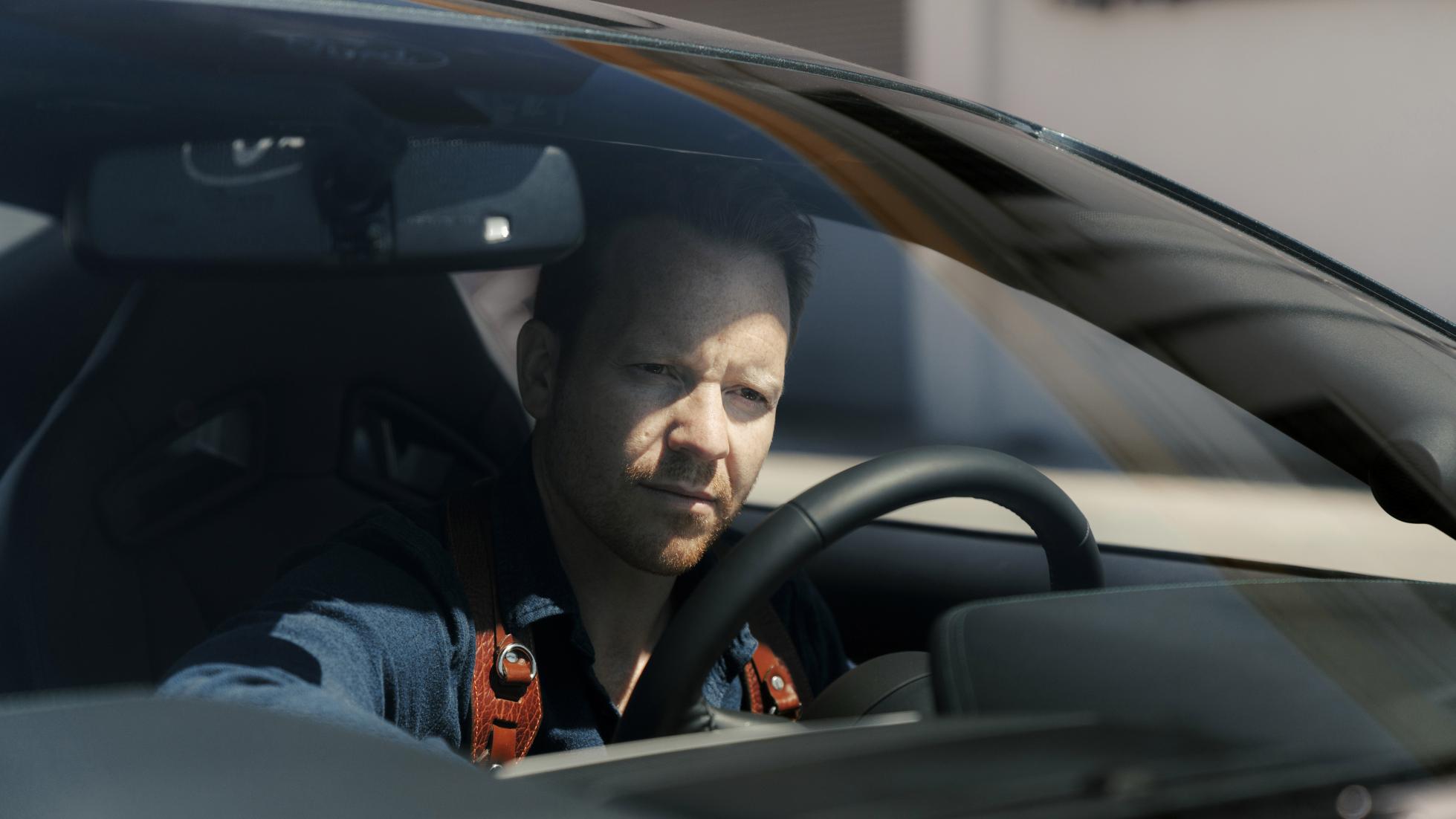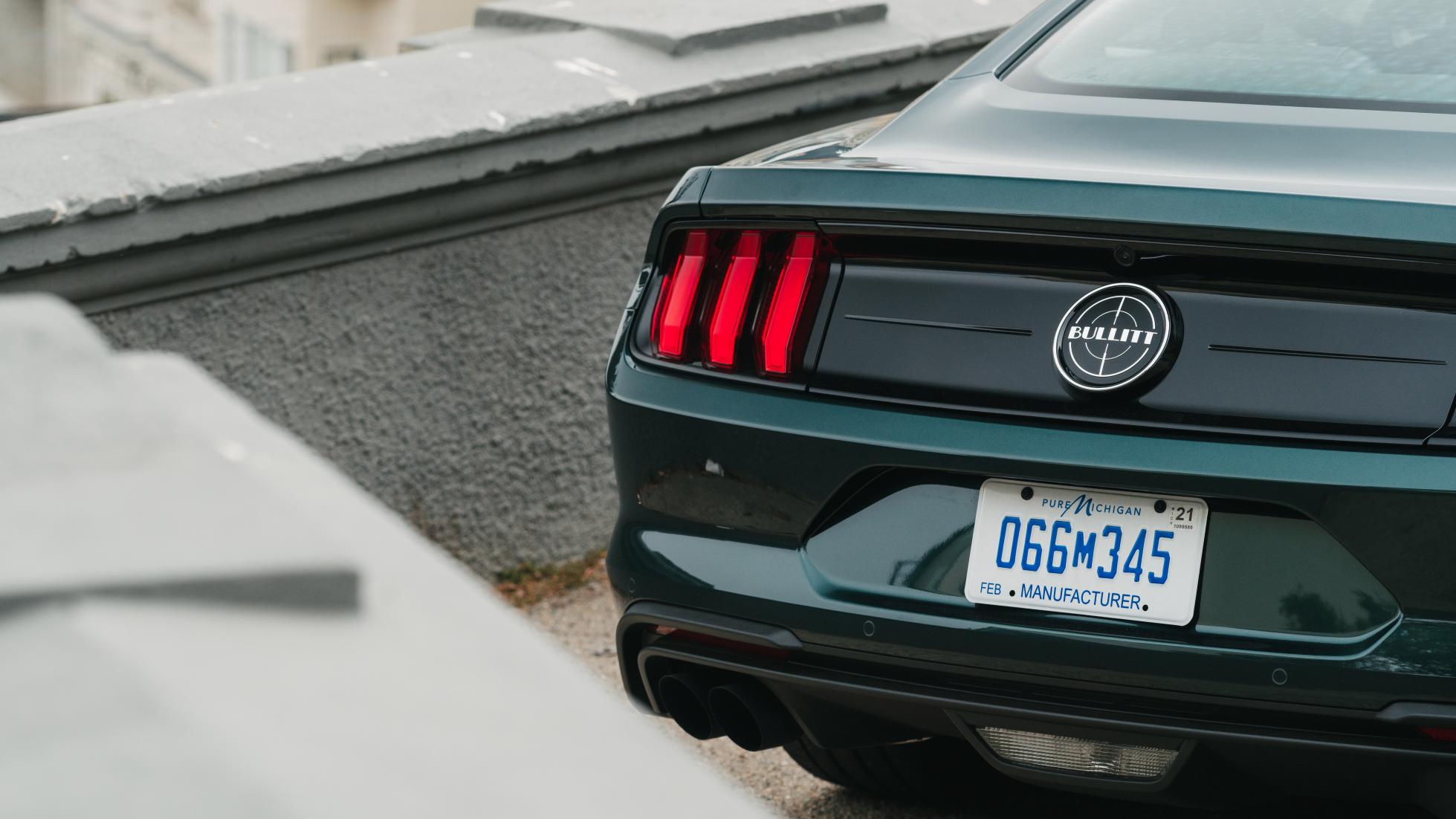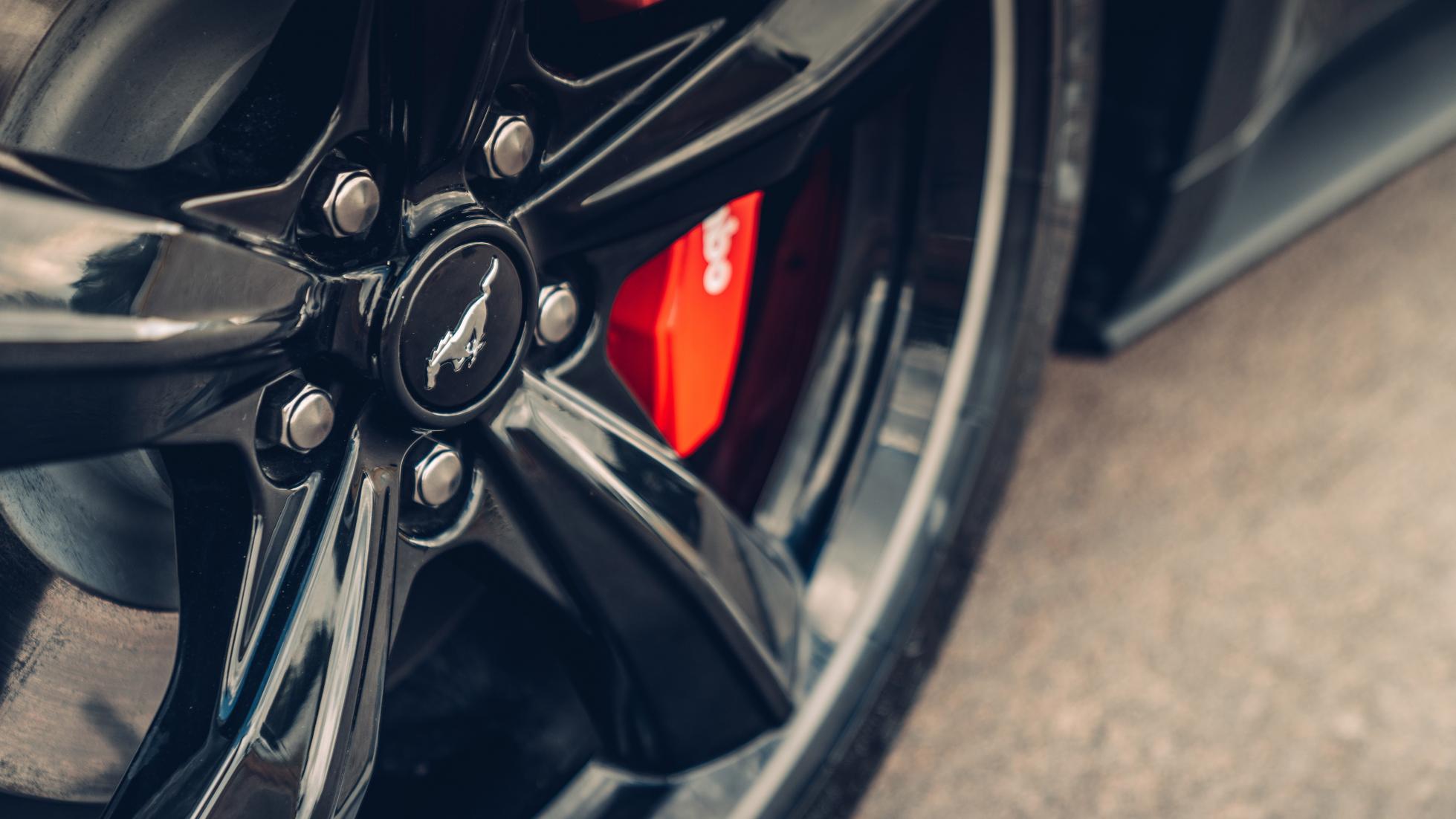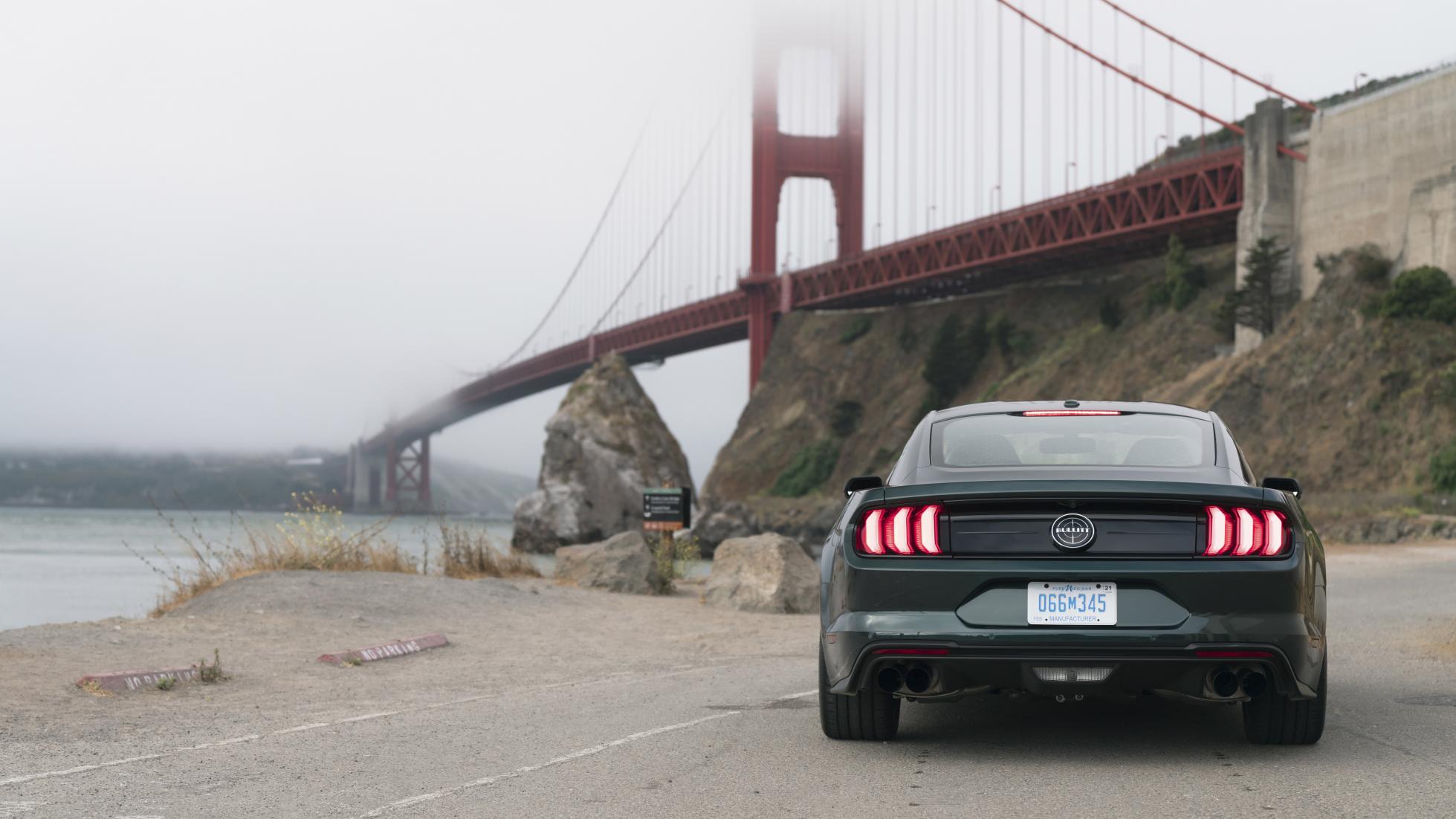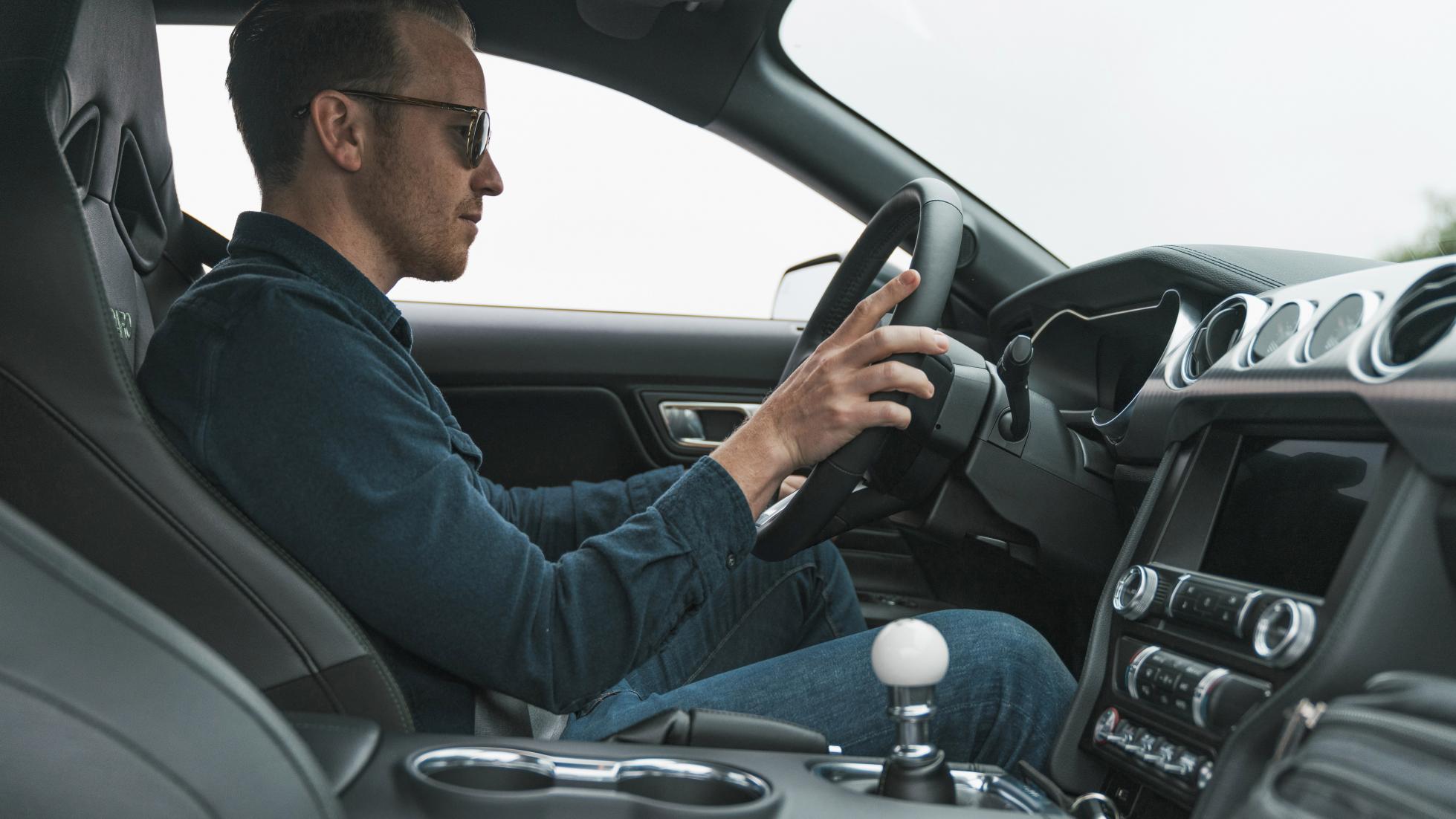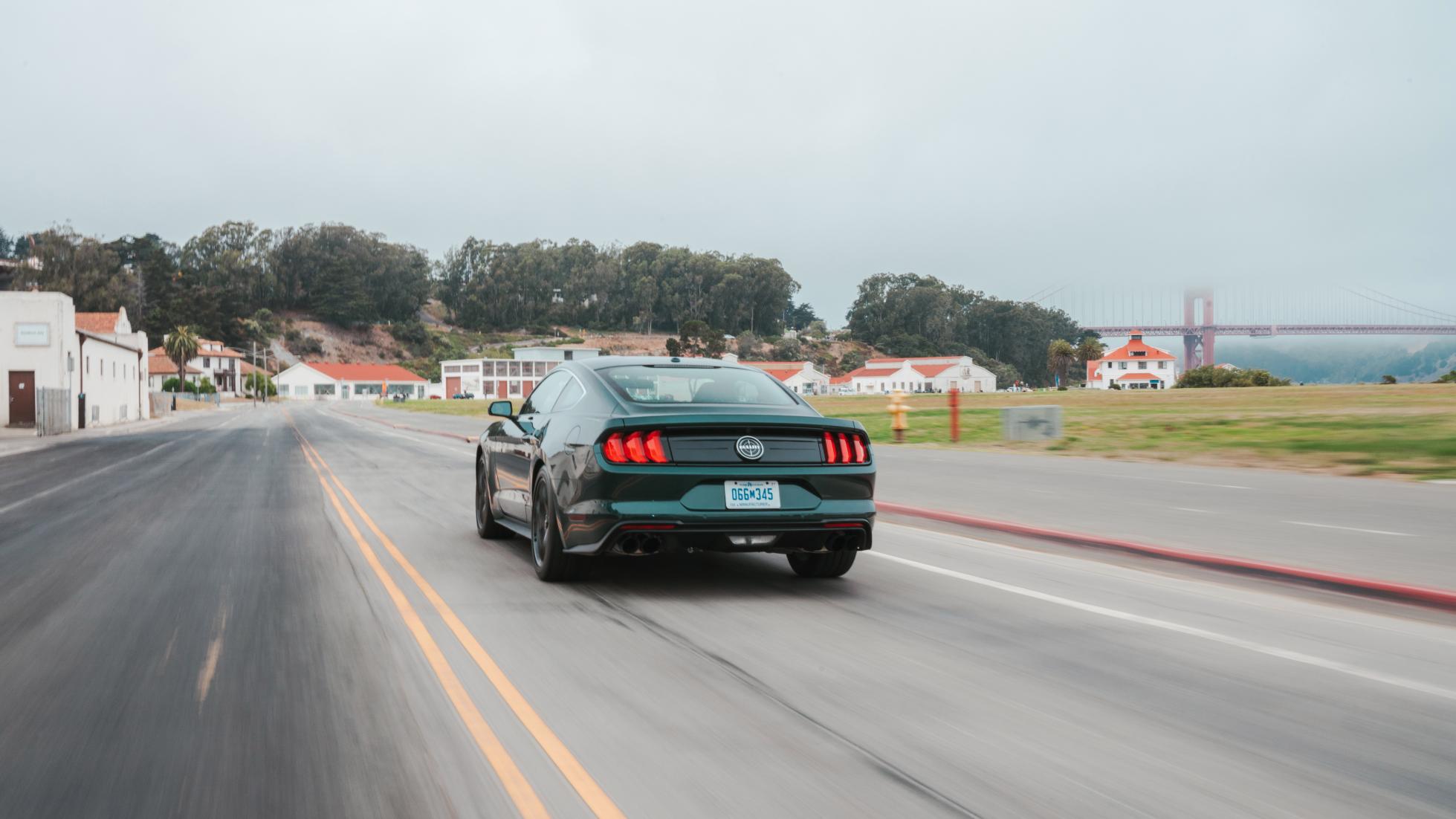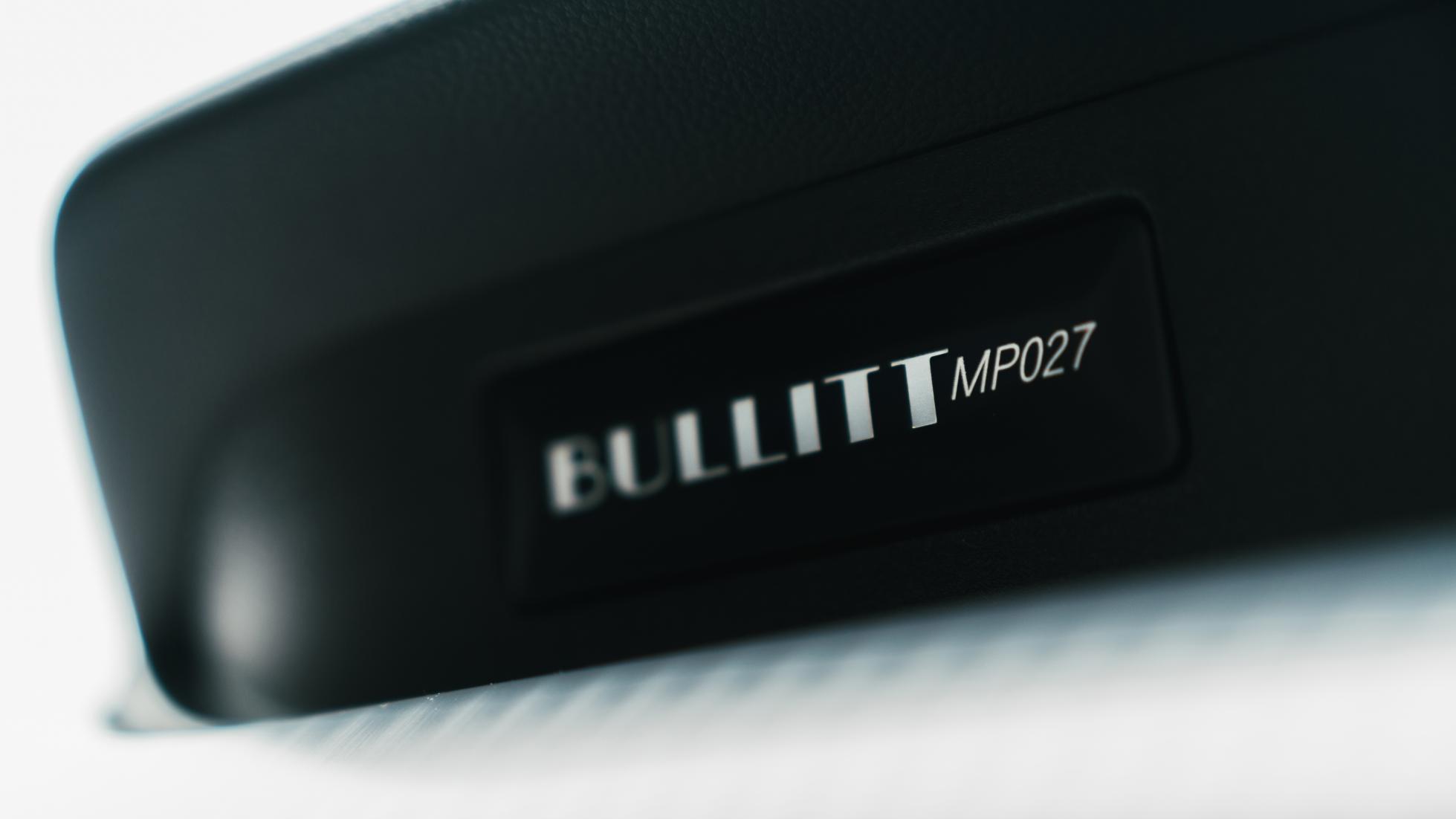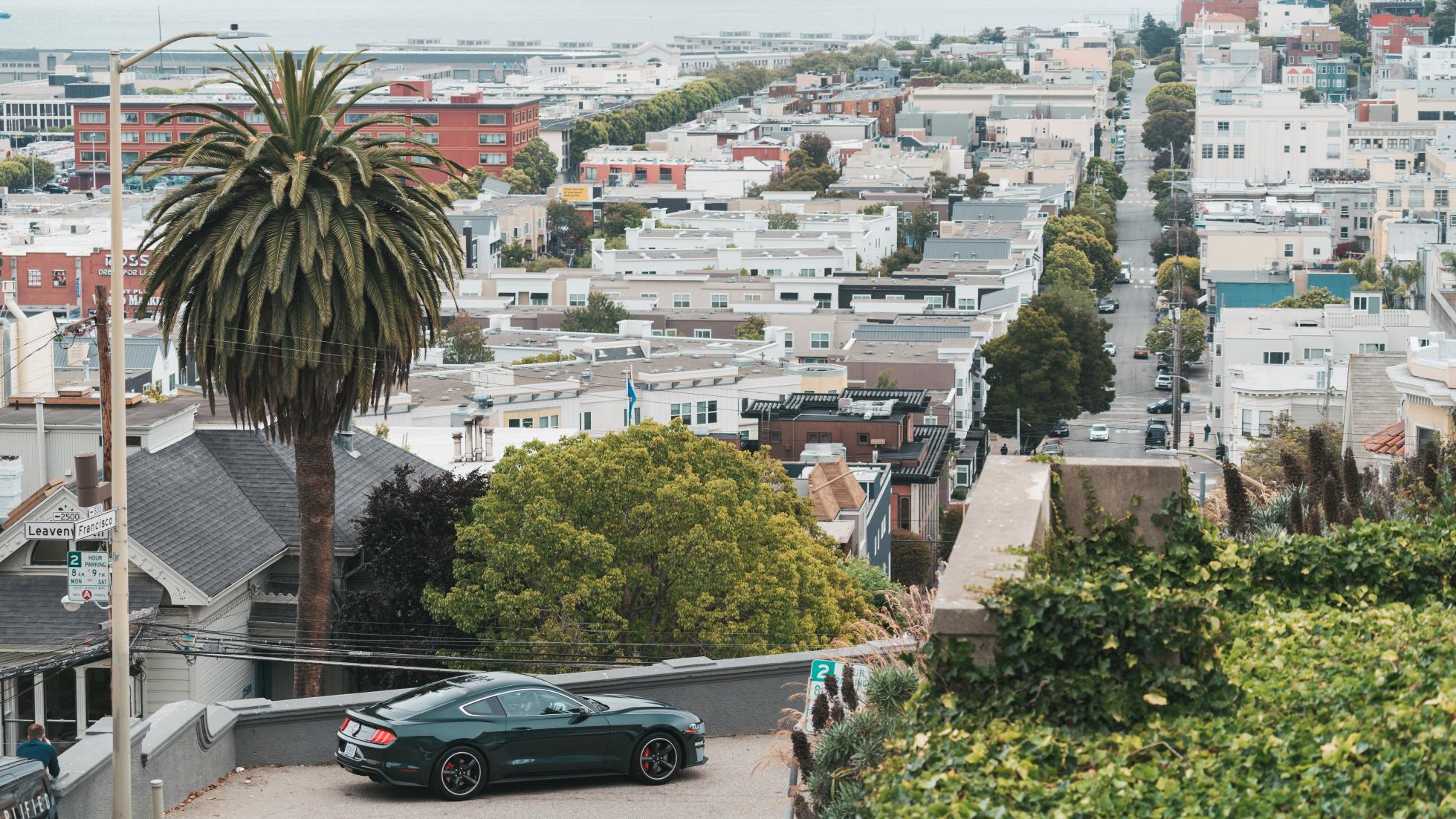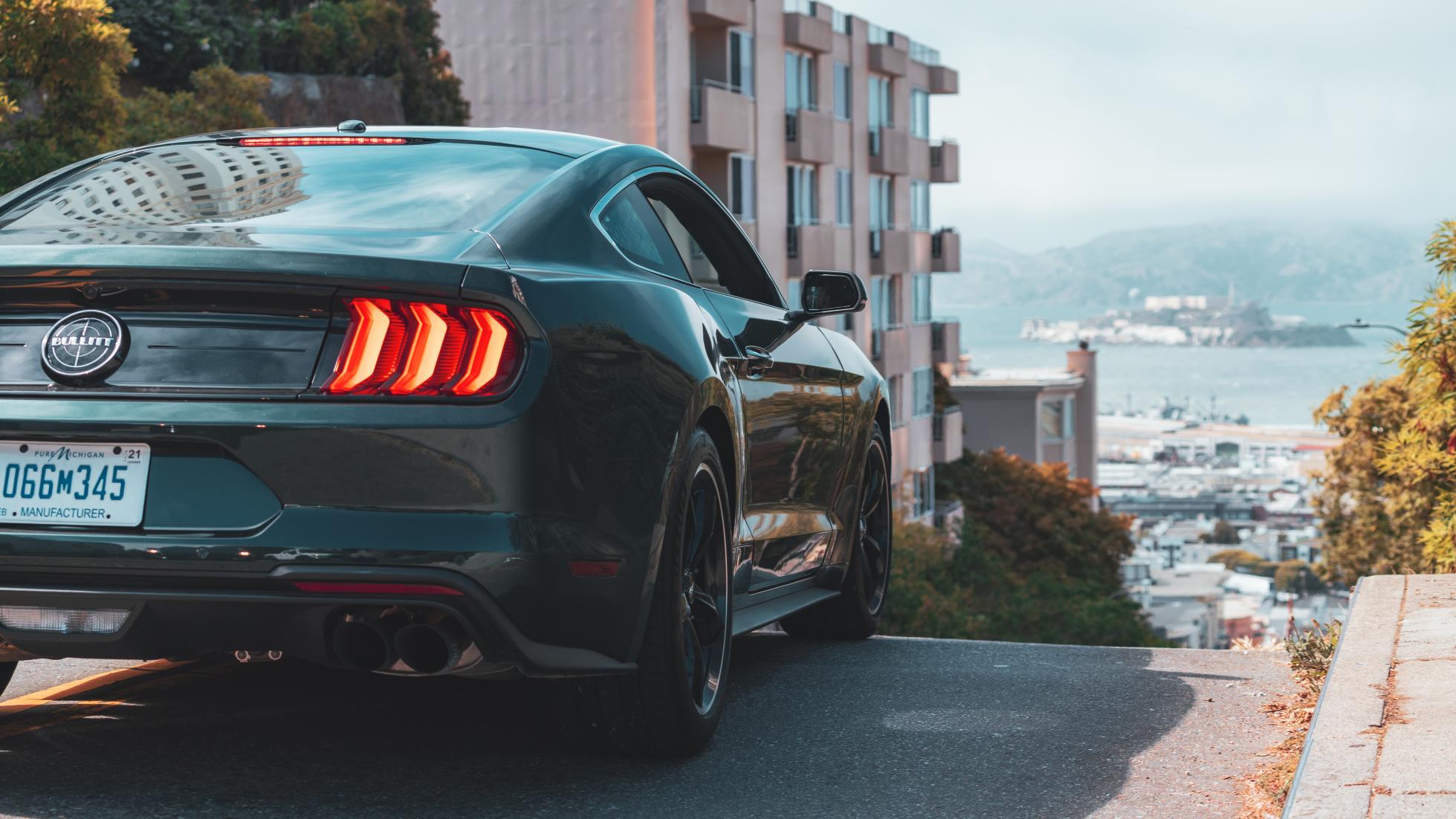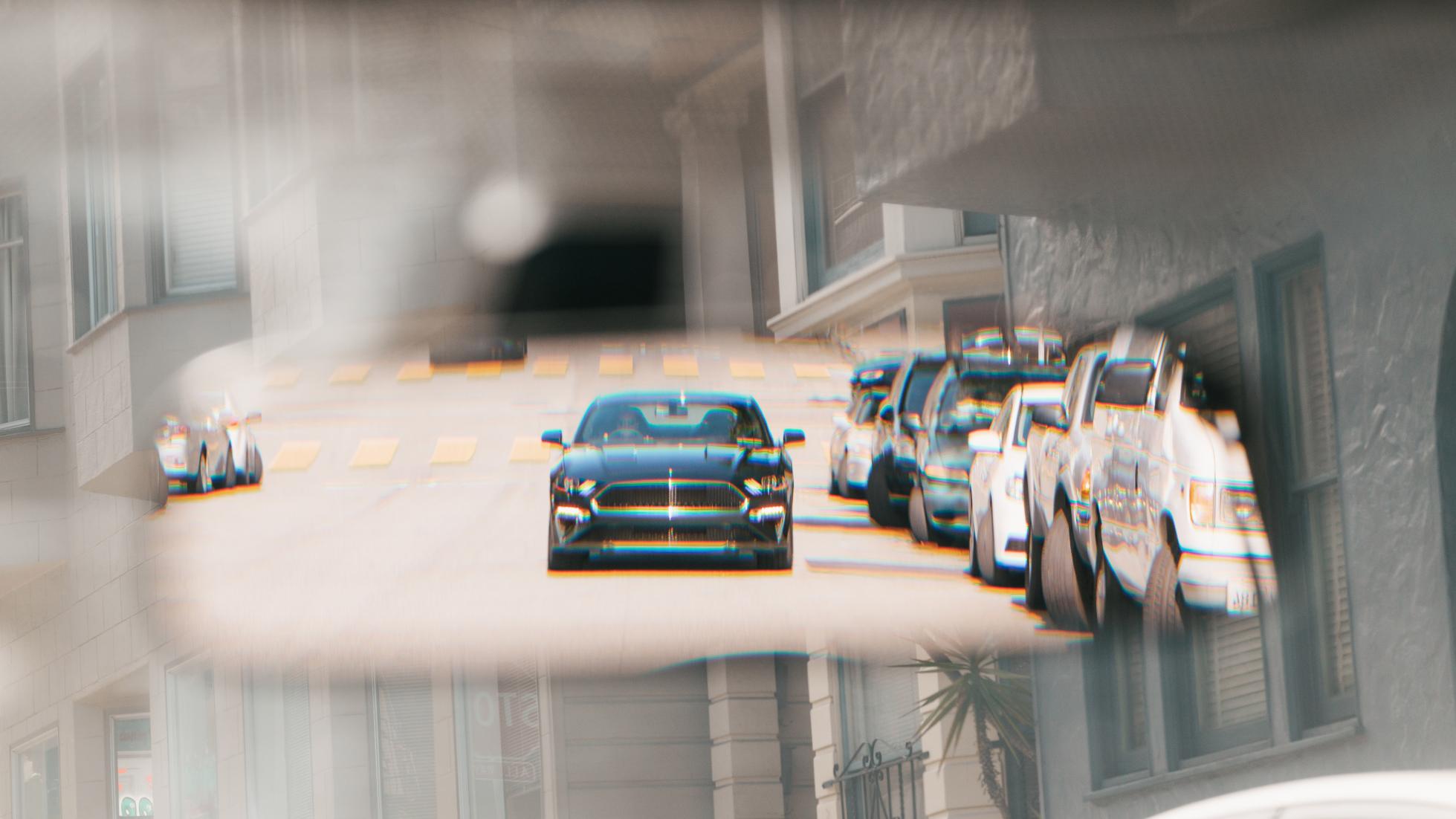
Chances are, you’ve seen the 11–minute chase scene from Bullitt probably more than once. Movie buffs with Dominos on speed dial and poor social skills may have watched it several hundred times, poring over every frame, but I’ll bet precious few of you have sat through the full one hour and 54 minutes.
I have, and let me save you some pain: Bullitt is 11 minutes of film-making genius wedged between one hour and 43 minutes of stagnant drivel. But that’s OK, because what the soggy edges of this sandwich do is bring the deliciousness of that filling into stark relief.
In fact, I implore you to sit through the opening hour just to experience a movie move up three gears in the space of 30 seconds – it’s quite something. The fury, danger and realism of the chase hit you like a baseball bat to the face until you’re sitting bolt upright, eyes on stalks, adrenaline pumping and furiously scanning Google Maps for the nearest humpback bridge.

Considering it comes from a time before CGI made anything feasible, it was, and remains, the finest piece of car-based hijinks ever committed to celluloid, and cemented the Mustang’s status as a pop-culture icon. But there’s no single thing that makes a movie car stick in the collective consciousness, it’s a combination of many: a great location, a hero behind the wheel, stunt driving to die for, a soundtrack to make your hair stand on end, and looks capable of causing significant trouser trouble at 50 paces all help. You’ll notice that an accomplished narrative arc or character development aren’t strictly necessary, which is why the Bullitt Mustang has it all.
When the Mustang was picked for its role, it had only launched four years before and wasn’t quite the symbol of freedom, fun and cheap horsepower it is now. It arrived in 1964, pitched as well-priced, practical transport for couples and young families, and was only selected for Bullitt ahead of one of McQueen’s beloved Porsches because Warner Brothers had a pact with Ford to use its cars.
In 1967, Ford had slotted the bigger 390-cubic-inch (6.4-litre) V8 into it – some proper muscle – and it did the trick. The sight of this GT 390 Fastback smoking and gargling its way through San Francisco catapulted the Stang’s stock into orbit.
For the stunt drivers to launch unsighted off every crossroad and not end up on their roofs, or curled up in the footwell sobbing, is a thing of wonder.
So much so, that here we are, exactly 50 years after detective Frank Bullitt donned his tweed jacket and went for a drive, being handed the keys to a 50th-birthday tribute to his car. In front of us, the Golden Gate bridge and the very streets he and a team of stunt drivers carved up in hot pursuit of a black Dodge Charger – and nothing to do but follow in his tracks.
So how faithful is this modern remake to the original blueprint? Cosmetically, it hits all the marks. There’s the Highland Green paint of course, although Shadow Black is optional (anyone who orders the latter shall be shot), leather Recaro seats with green stitching and logo, 19-inch aluminium wheels, no badges at the front but Bullitt graphics on the rear and steering wheel, and a subtly chromed grille. Non-historically correct equipment includes a 1000W B&O stereo and Bullitt welcome graphics on the LCD instrument cluster.
Mechanically, there’s authenticity, as well. The engine is a V8, the same 5.0-litre V8 as the standard GT model, but with power wound up, cruelly, by 14bhp to 453bhp in UK cars, but to 473bhp and 570Nm of torque in the US-spec car we’re driving here.
The exhaust has active flaps, the six-speed manual comes with a cue-ball shifter – worth the £47,145 ticket alone in my humble opinion – while, much like the Mustangs toughened for the film with race shocks, skid plates and special over-inflated tyres, the suspension has been fettled too, with “heavy duty” front springs and a stiffer rear anti-roll bar. Even so, we’re asked by Ford to agree to a no-jumping policy. I shake hands on it, but refuse to sign anything.
Our aim is to follow the route of the chase as best we can, recreating stills from the movie along the way and diverting only to take in other choice spots including Twin Peaks Boulevard (a hairpin with the best view in town) and the Golden Gate Bridge because a) we’re tourists, and b) there was a chase sequence filmed here that died on the cutting-room floor. But it’s easier said than done. Although the chase was shot over four weeks, in a logical street-by-street order, the final cut hops about like a demented rabbit from one location to another – a haphazard editing technique responsible for several famous continuity howlers.
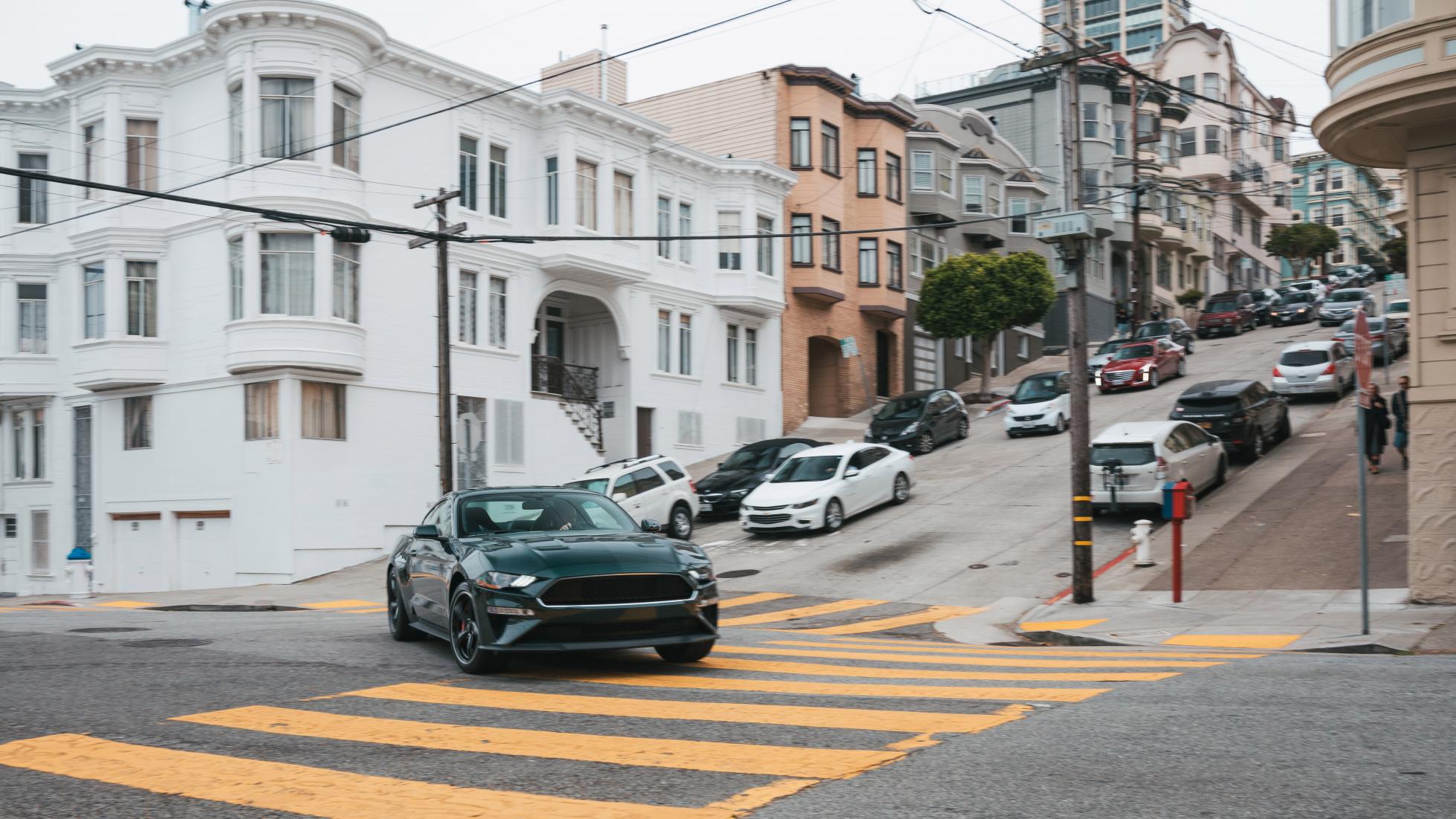
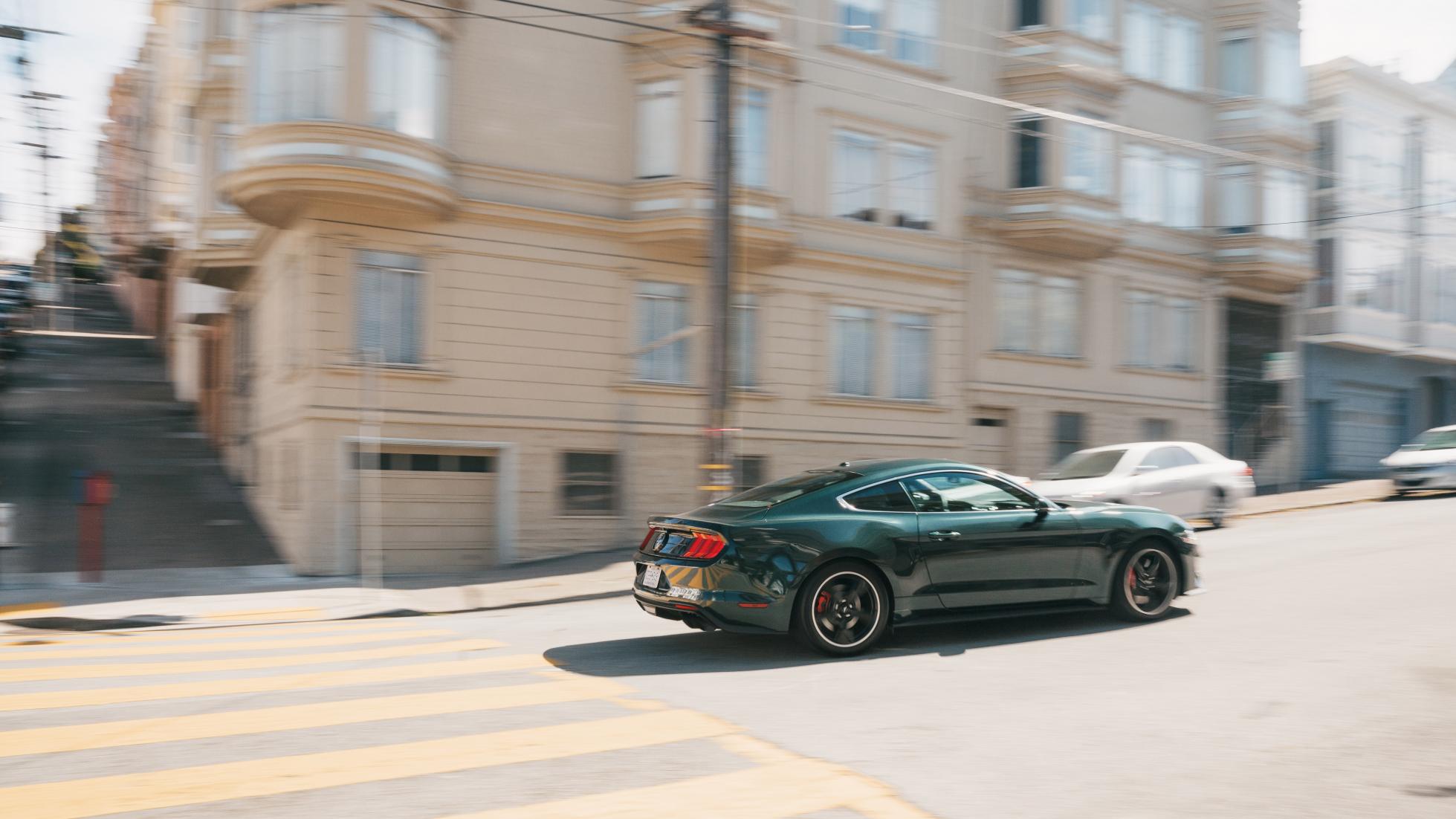
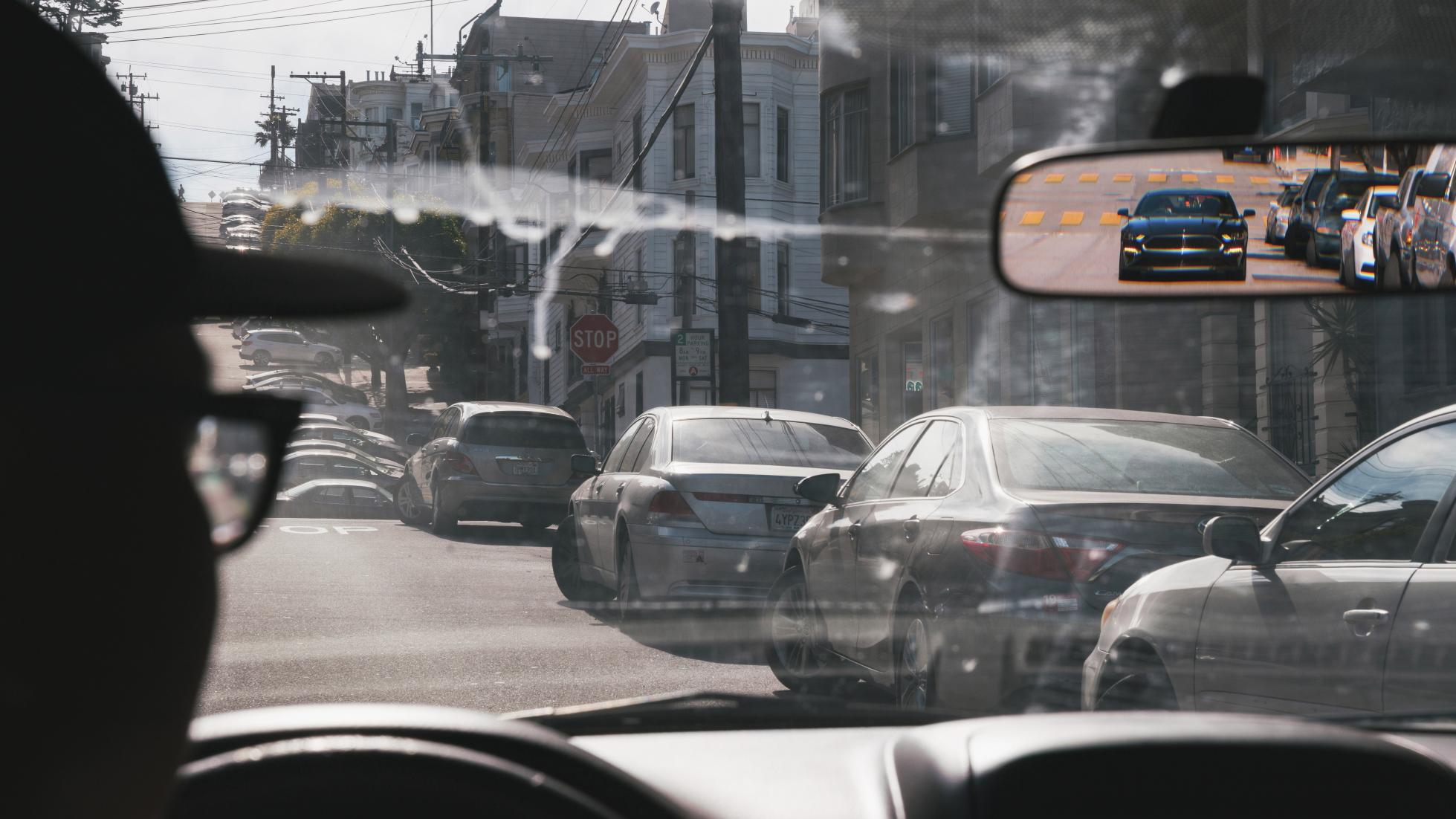
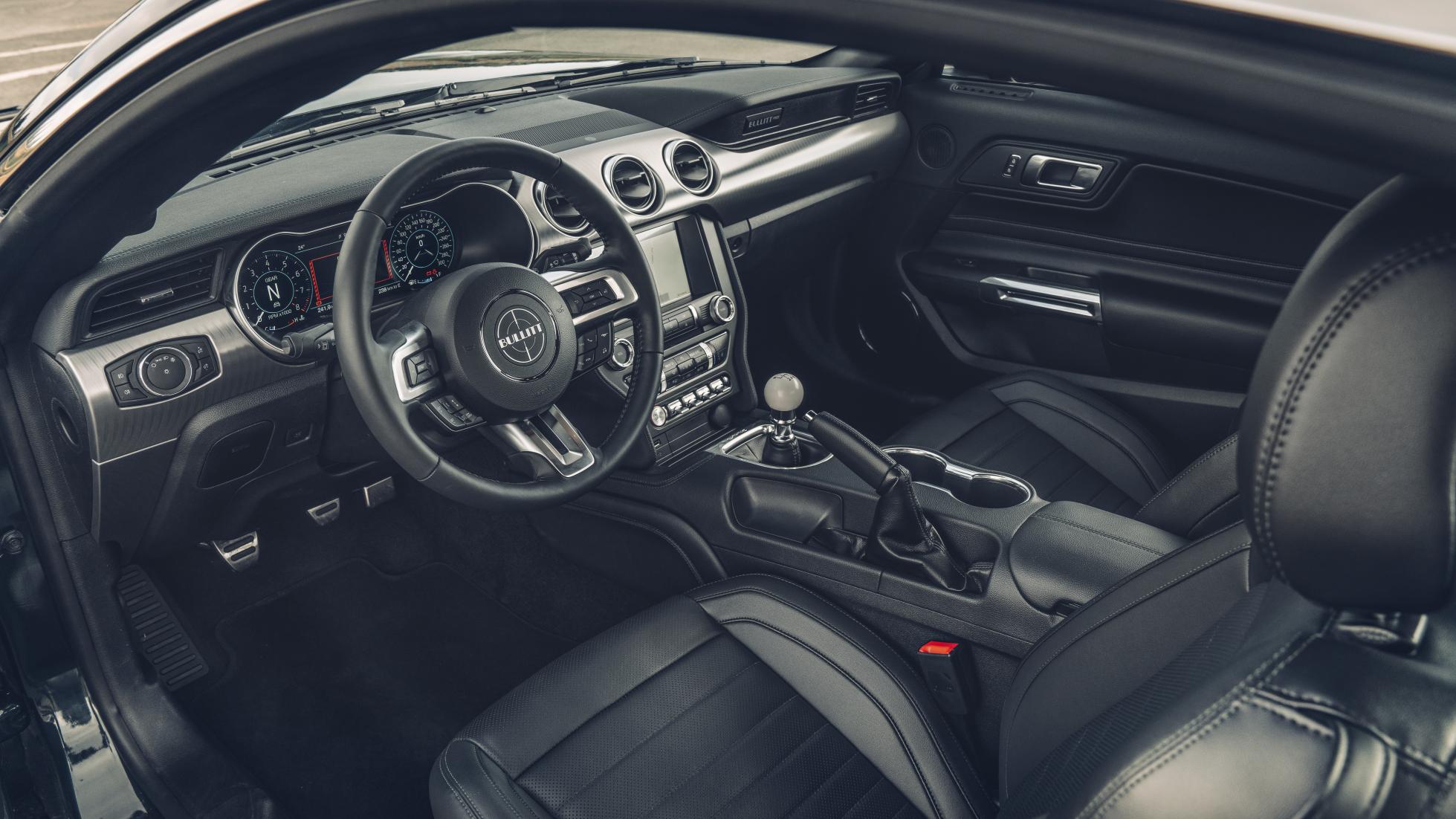
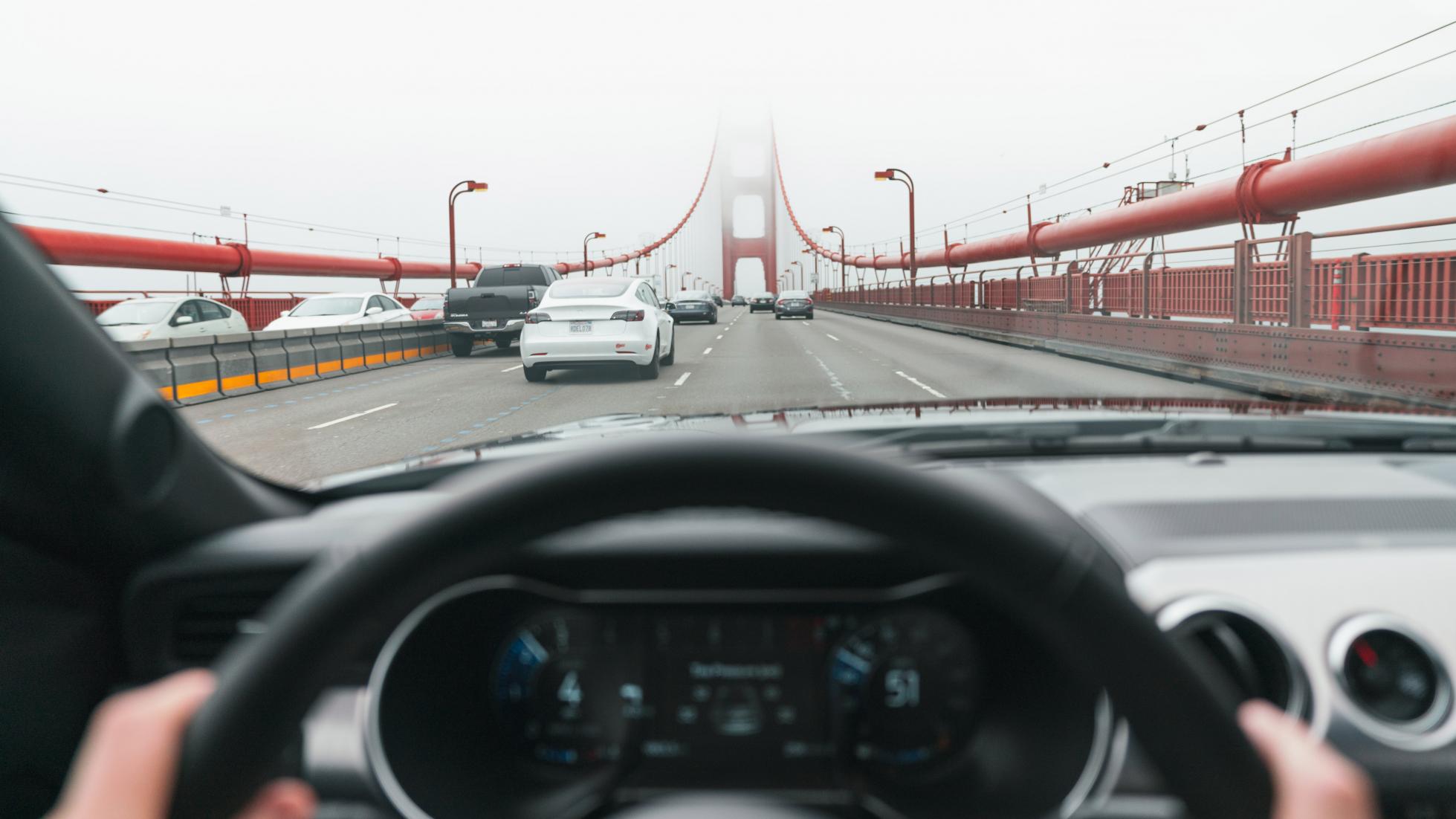
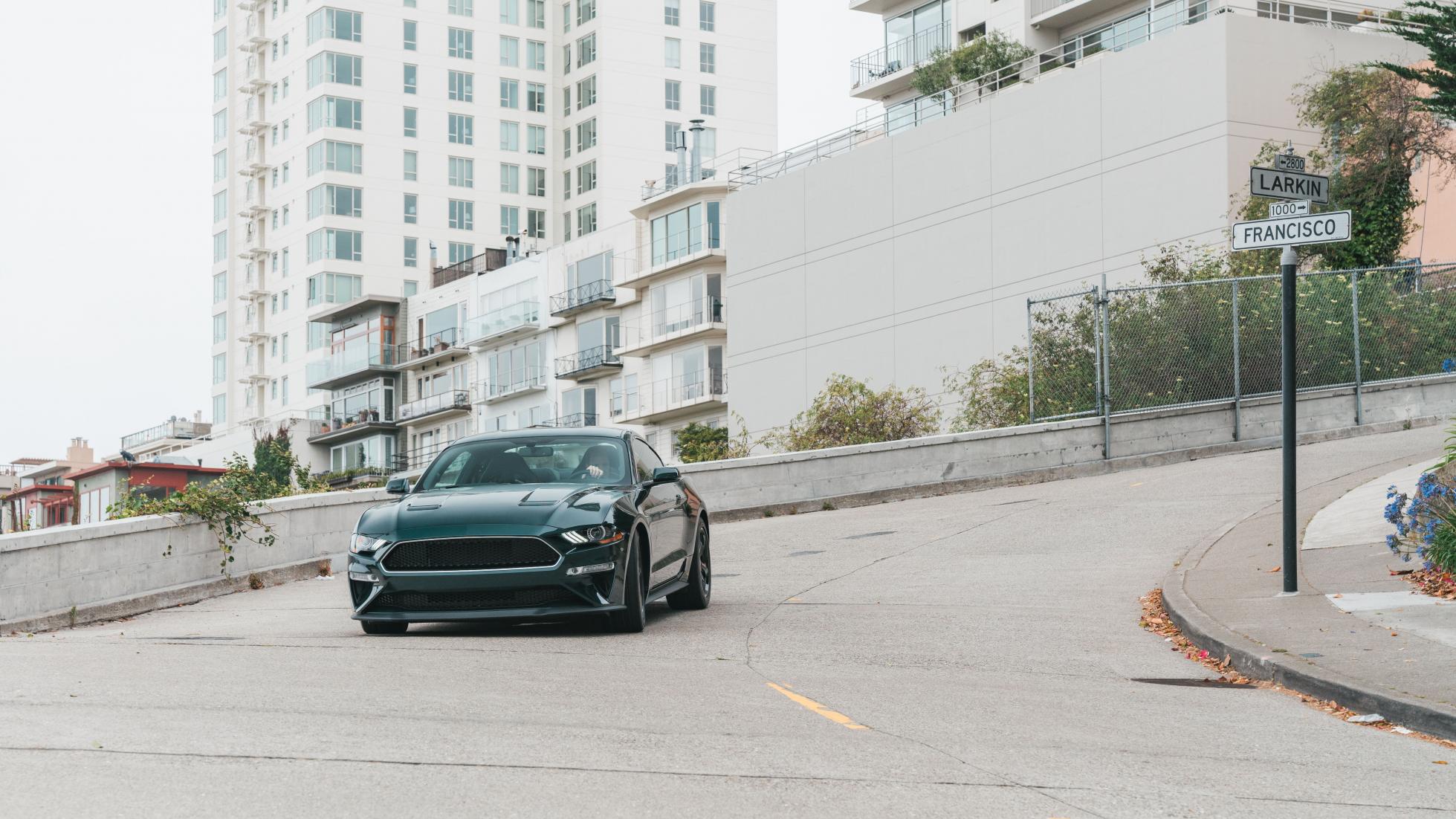
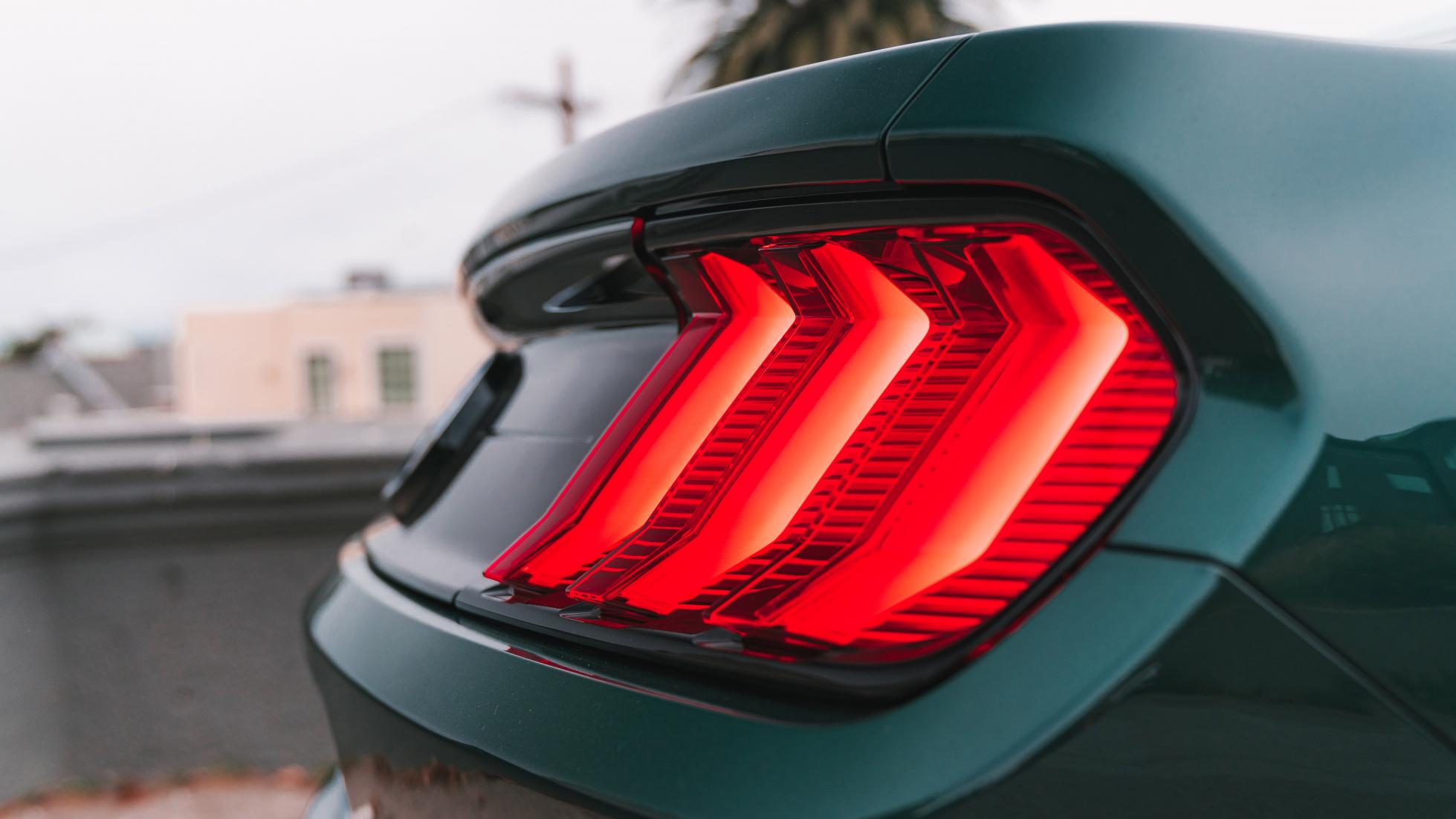
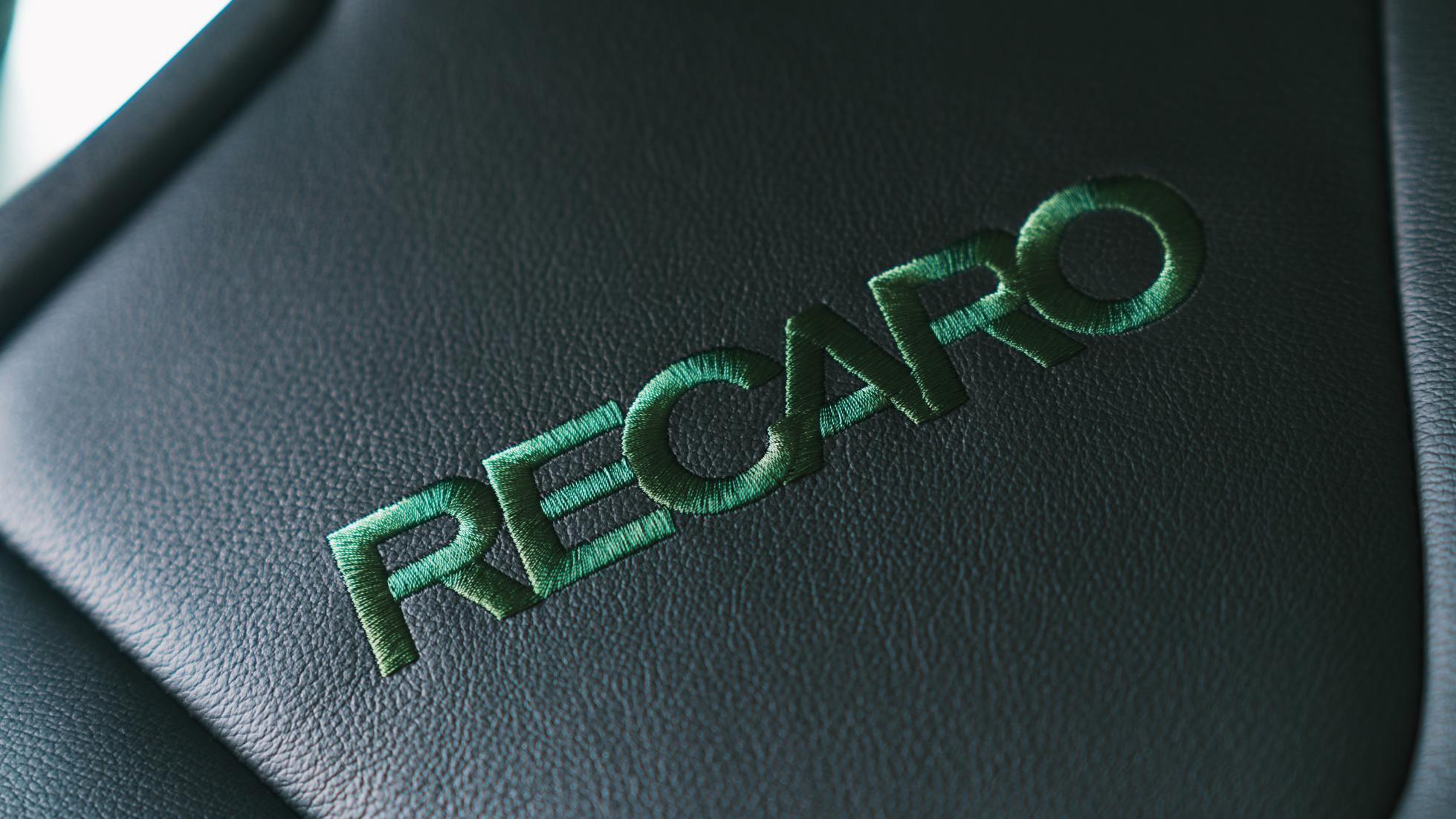
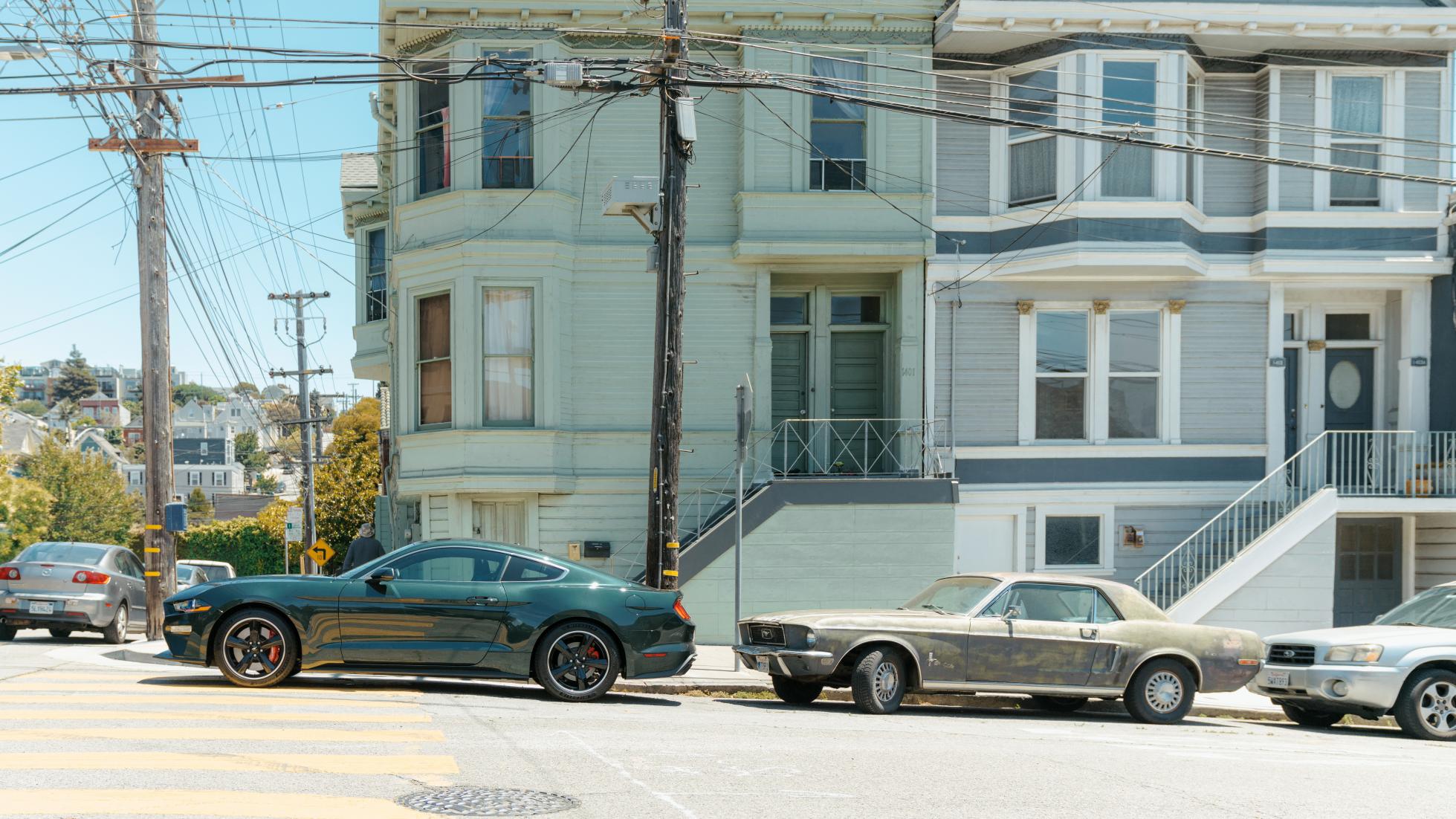
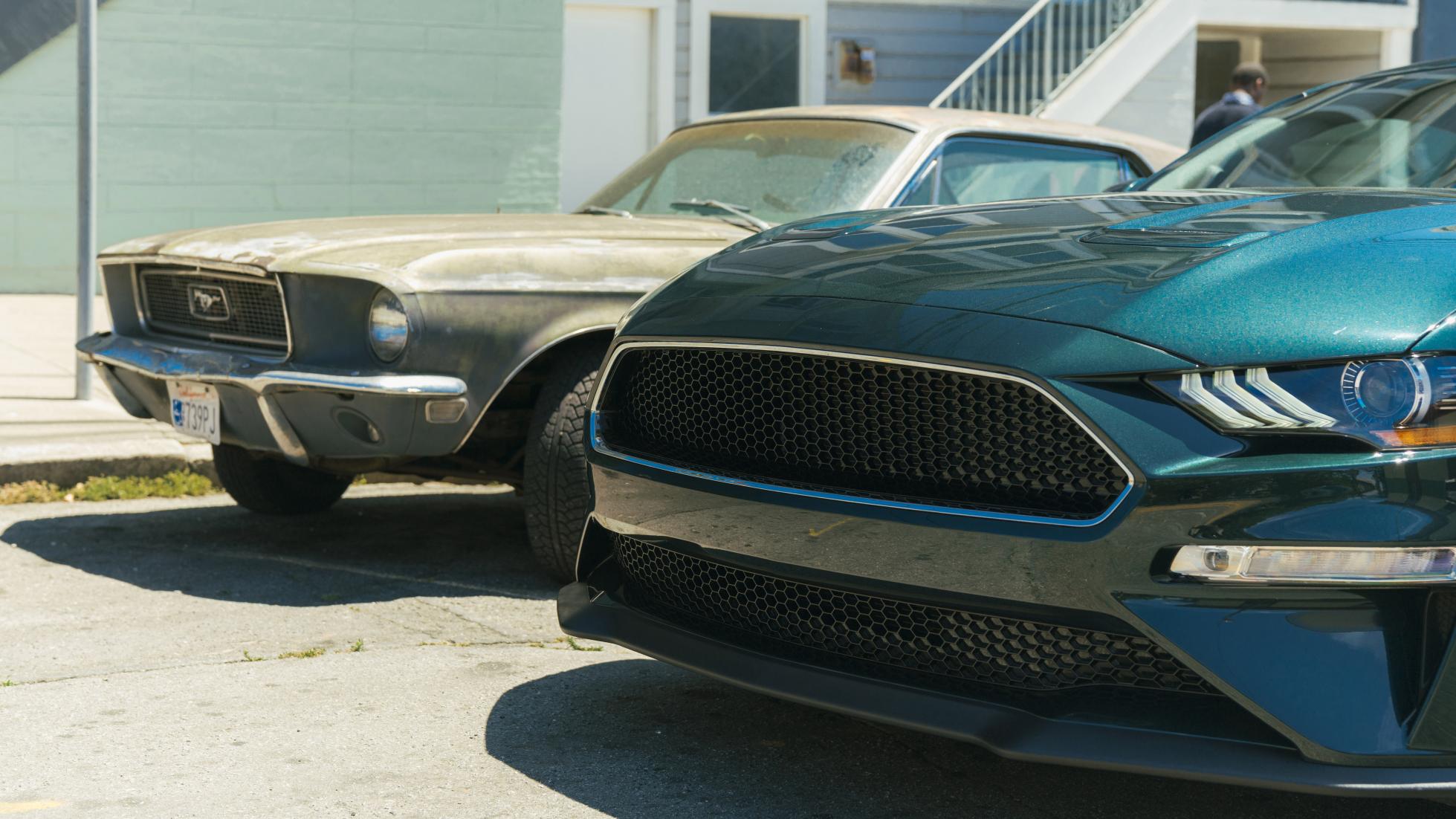
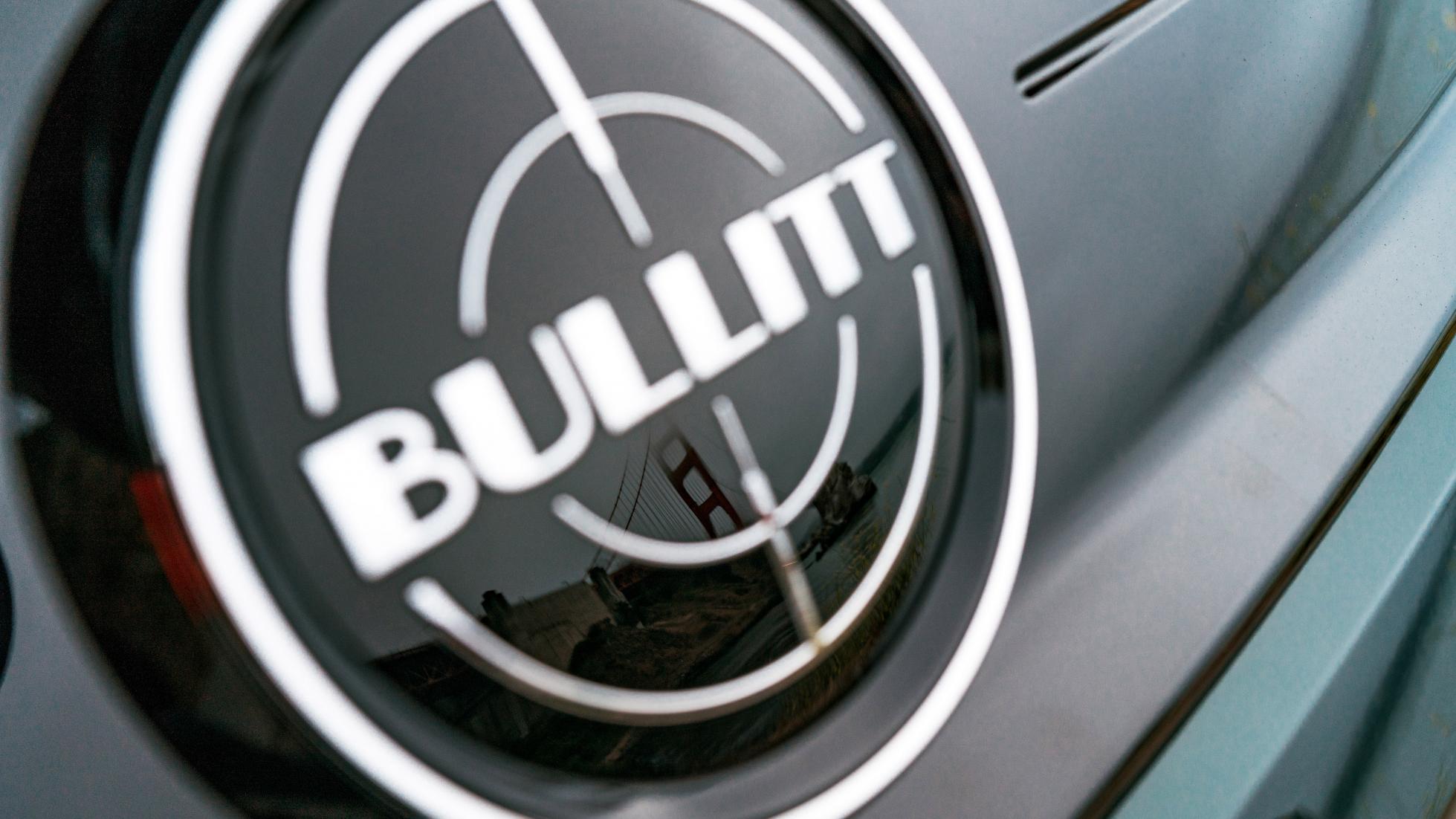
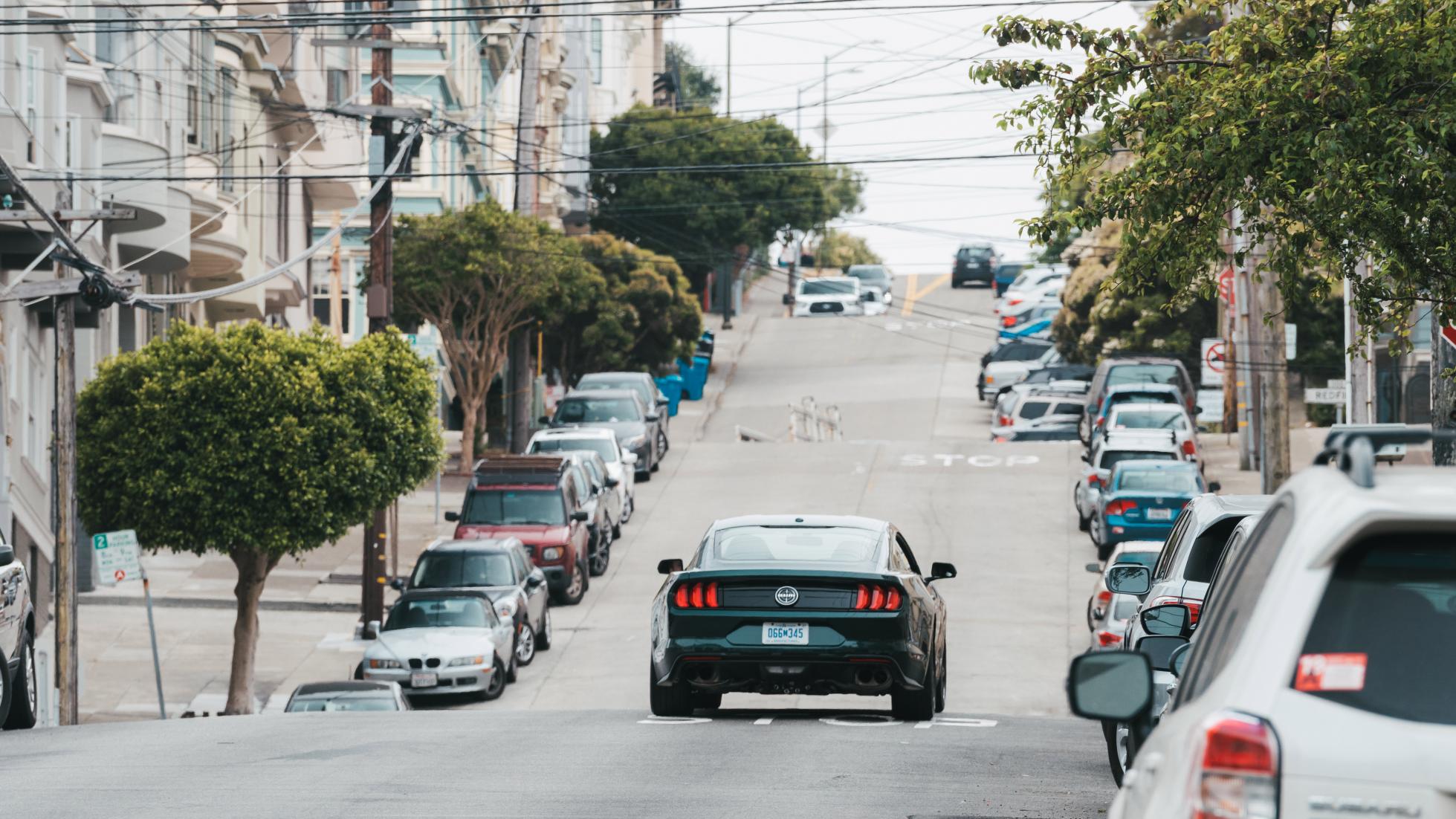
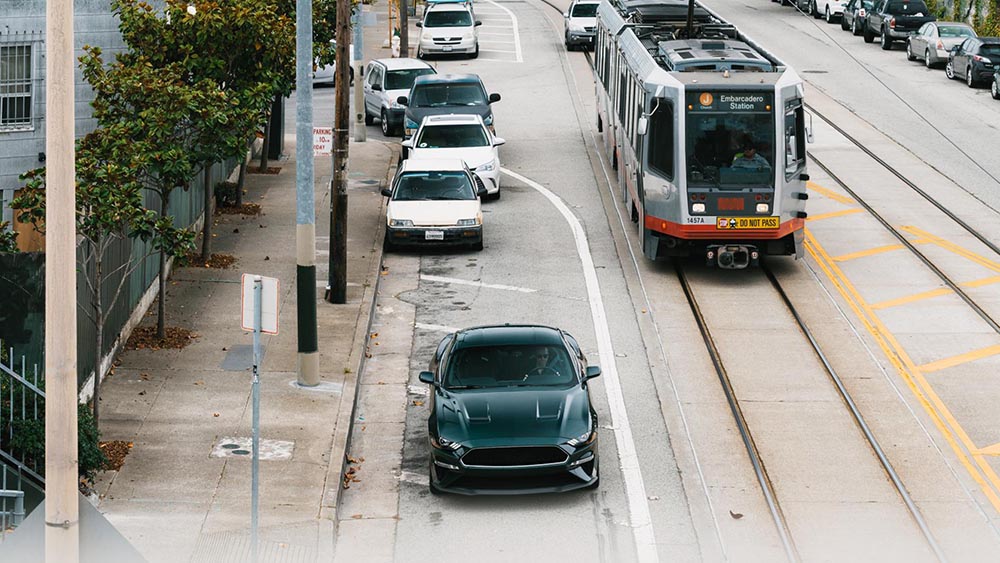
But we know where it begins, when Bullitt spots the baddies in their black Charger lurking under the 101, and, boy, does it escalate fast. The hunted becomes the hunter, a minute or so of cat-and-mouse, then it’s on… McQueen takes off after the fatter, but more powerful Dodge, both cars get air on Potrero, the Charger demonstrates extreme, unavoidable understeer on Kansas and clips a parked car on another physics-denying right-hander (intentionally, so the Charger’s stunt driver Bill Hickman claims).
McQueen gets his chance to show off, too, pulling a dubious burnout in reverse, but it isn’t until they arrive on Taylor Street that things get really interesting. It’s here, with both cars taking flight at every intersection and landing with a butt-puckering crunch, that the brutality of what they were put through becomes clear.
Fast forward 50 years and as we teeter at the top of Taylor, seeing nothing but green bonnet and sky, the absurdity of that sequence kicks in. This isn’t a road, it’s a diamond-black run. Up is fine, but every intersection becomes a blind crest, a leap of faith. On the way down, visibility is better, but potential for skinning the car’s chin is far greater.
For the stunt drivers to launch both cars, unsighted, off every crossroad and not end up on their roofs, or curled up in the footwell sobbing, nerves shot, is a thing of wonder. We’re not just talking about a series of one-off stunts, either – they needed to be strung together, like the hard left off Taylor into Filbert. They needed enough speed to take off at the last intersection, but enough margin to still slam onto the flat and make the left-hander at 60mph, ideally with armfuls of opposite lock.

All of it required immense planning and incredible skill, and not just from the drivers. The masterstroke of director Peter Yates was putting the cameras inside the car, letting the viewer feel, and see, every neck-crushing bump and how busy the drivers’ hands were on the wheel. These days, we stick a GoPro anywhere we want, hit a button and think nothing of it. Back then, it was revolutionary.
Although Bud Ekins (the stuntman who slides off the oncoming motorbike towards the end of the chase and he of The Great Escape fence-jump fame) did some driving early on in the shoot, it’s Loren Janes (Mustang) and Bill Hickman (Charger) in the cars. Contrary to folklore, despite being a serious talent in his own right, McQueen only did about 10 per cent of the driving himself, leaving the really dangerous stuff to the professionals. After all: no McQueen, no movie.
We might not be catching air, but we’re causing a stir. The petrolheads clock the badge, the paint colour and where we are and nod sagely. Everyone else just swivels and stares as we rip up the hills in first gear, exhaust in Track mode rasping hard under load, crackling when we lift off. Maybe it’s wishful thinking, my brain telling me what I want to hear, but given there’s 50 years between the movie car and this, the sonic similarities are spooky.
Given owners’ damning appraisals of the GT 390 Fastback’s handling and the abundance of body roll visible on both chase cars in the film, even after being stiffened and prepped for on-screen duty, it’s amazing how far we’ve come. This new car feels rigid – on pockmarked surfaces probably overly so – but instilled with a sense of indestructibility.
Everything, from the steering to the gearshift, operates with a reassuring physicality. Ultimately, it can’t hide its mass at ten tenths, but how likely are you to treat your Mustang like McQueen did his, assuming you value your licence and your life? Within its limits, it feels sturdy, brawny and built to last. In all honesty, you don’t notice the extra power and the beefed-up suspension, but fair play to Ford for offering something extra, not just resorting to a colour-and-trim exercise.
Question is, having taken it to the place where the legend was born, is it all just marketing guff cashing in on Bullitt’s celebrity, or is it truly worthy of the name? And does some of the movie magic rub off, making it more than the sum of its parts? I’d say yes for the simple reason that, were McQueen alive today, there’s no doubt he’d enthusiastically approve. There’s a rawness and simplicity to it that hasn’t been lost over the decades or smothered by electronics, a clear lineage from 1968 to today. If we could time-travel, it’s a car McQueen could jump in, and be fast and flamboyant straight out the box.
But there’s a problem… McQueen’s legendary heroics are giving me false confidence in the car. With every burnout and slide, I can feel his spirit growing inside me, blurring the lines between Hollywood and reality, confusing real memories with make-believe. I’m teetering at the top of Taylor again, but this time I back up, floor the gas, dump the clutch and let it fly, serenely and in slow motion, into the endless Californian air. Real life: it’s never quite like the movies, but today we got damn close.
- Jack Rix
